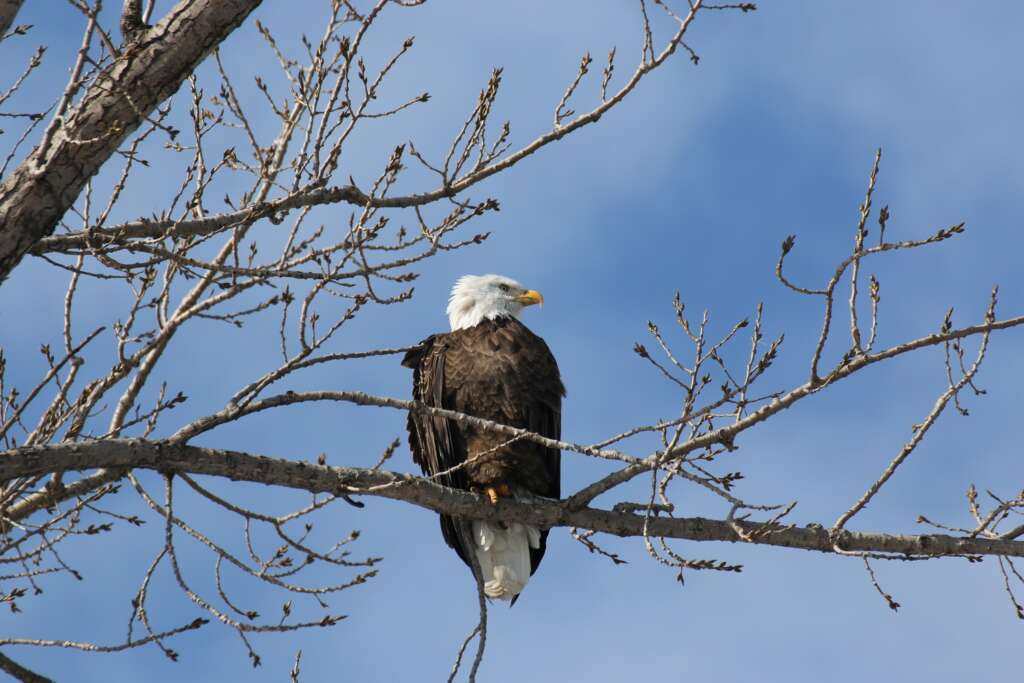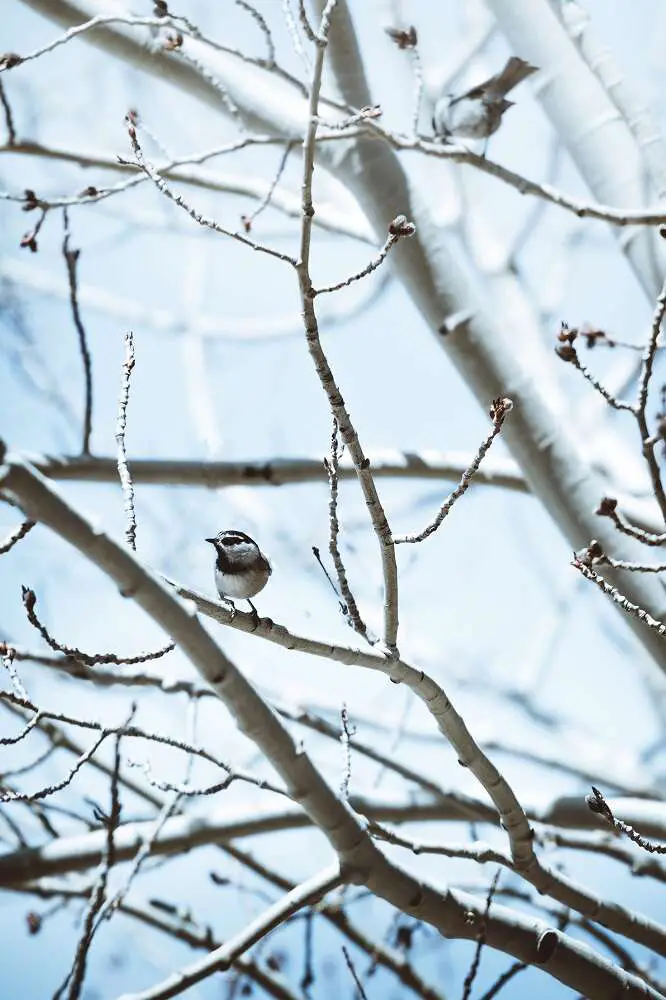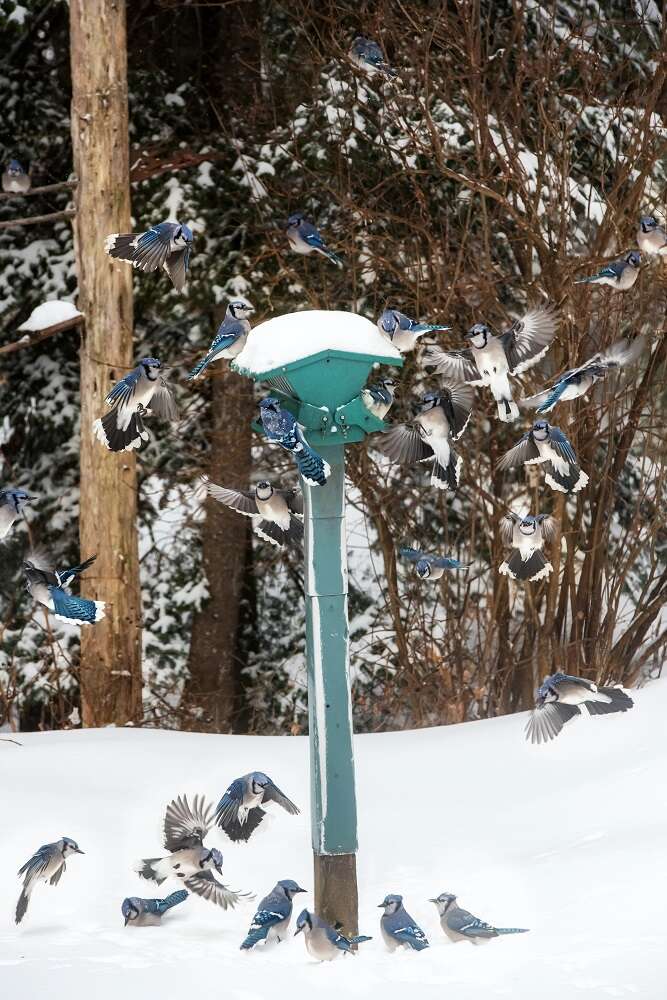Guide to Birding in the Snow
Birding in the snow is becoming an incredibly popular pastime for bird fans and is something that you may consider. Before you start, it is important to understand a few simple steps that you can take to ensure that you don’t run into any complications and to help you spot new and exciting species.
If you want to learn more about birding in the snow, 2 min is all it takes to read any of these sections. Browse through each to get an idea of what topics we discuss here. You can use this information whenever you go birding in the winter and adapt it to your unique situation at the same time.

Can You Bird Watch In the Winter?
Bird watching in the winter is not only possible but can be very rewarding if you approach this process properly. There are a few fun benefits that you may experience when you bird watch in the winter. Just a few that you may want to consider before trying include:
- Varying Species Options: Some species are more common in the winter than in the summer or are easier to find. For example, the smaller tree cover makes red and black birds easier to spot against the snow, which may make this process more effective and enjoyable for you.
- Fewer Competitors: Have you ever been out in the woods and about to identify a bird when a well-meaning family clomped through the area and scared them off? Birding in the snow cuts back on this unwanted presence and may make this experience even more enjoyable.
- Bigger Challenge: The tougher winter environment can make birding a little more challenging. If you want to try out a rougher situation or want to challenge yourself more, you might bird in the snow. Doing so may increase your enjoyment of this activity during the summer.
These are just a few of the benefits you may experience when you bird watch in the winter. It is important to understand that a few other factors may affect your enjoyment, so make sure that you read through the rest of this article to learn more about birding in the snow properly.
What Time of Day is Best to Look for Birds in the Snow?
The most challenging part about birding in the winter is knowing when to go out. Simply put, birds act differently in the winter and may not be as active as you may want. As a result, it is important to pay attention to a few different factors to ensure that you get the best results.
First, it’s best to get out just as the sun is rising because birds will typically stay hidden and asleep until then. As the sun typically rises later in the day during the winter, you may have to get out by nine or 10 o’clock, depending on where you live. Pay attention to the sunrise predictions on your local weather channel.
Next, it is important to know when the temperature is likely to peak. Birds will stay packed in warmer environments until the day warms up a little. Typically, the day’s temperature peaks at about three in the afternoon because it takes three hours for the sun’s heat to reach the Earth’s surface.
During three and sundown, you’re likely to see the most birds when birding in the snow. Understand that temperature and weather may also play a factor here. Birds are less likely to be noticeable when the temperature is below freezing or if it is actively snowing and raining. Pick sunny days when birding to improve your chances of finding bird tracks, too.

Where Can I Find Birds in the Winter?
Birds in the winter are likely to hide in spots with strong vegetation or near spots with extra covering. Try to focus on pine trees and other year-long trees. Birds may nest in these during the winter because they provide the most protection and will also attract various prey creatures, such as insects.
However, you may also want to look around man-made structures throughout a natural area. Birds like to flock to these areas during the winter because they provide stronger protection and security. Look for things like ranger stations, cabins, and other buildings throughout an area.
Furthermore, look for natural and man-made dams when birding in the winter. Why? The steady water flow keeps the river’s surface ice-free and provides a prime hunting ground for birds. It is important to pay attention to what birds eat when picking spots where they may hang out in winter.
It’s also not a bad idea to check out power lines and other areas where birds may roost in the winter. These high spots provide birds with plenty of viewing area to avoid predators and spot prey. Often, they hang out on high-powered wires that wind through wooded areas and connect communities.
What Should I Wear When Birding in the Snow?
Proper winter clothes are important to wear when you go birding in the winter. Here are a few options you should consider when stocking up on your birding gear:
- Thick Socks: Buy the thickest possible socks that you can, particularly crew socks that go up to your ankles. Merino wool is an excellent material to look for in birding socks because it provides maximum warmth and resists wet snow and rain very well.
- Winter Boots: A sturdy pair of winter boots, particularly gaiters, can keep your feet dry when birding. Gaiters are also lightweight and waterproof and can be strapped down to minimize wiggling on your feet. This benefit is enormous when you go birding out in the winter.
- Gloves: Writing bird names in your logbook or flipping through an identification guide is tough when your hands are shaking in the cold. A nice set of thin and insulated gloves not only keeps your hands warm but minimizes bulk and makes writing and flipping through pages easier.
- Winter Coat: An attractive winter pullover with a light overall feel is a sound choice for your winter birding. Recycled polyester is a powerful material for a jacket, as is down for the insulation. Try to get a jacket that feels light on your body but insulated against the toughest winter winds.
- Sunglasses: On a sunny winter day, the UV glare off the snow is going to hurt your eyes and may even cause snow blindness. Thankfully, a sturdy pair of UV-protected sunglasses can minimize this risk and ensure that you feel comfortable out in the snow.
- Layered Clothing: Consider layering your clothing by wearing insulated underwear, a few shirts, a sweater, and a coat. Layer your pants and wear a strong cap to ensure that your head is protected against the powerful winter winds that may blow when birding.
If you buy the best winter clothes for birding in the snow, you should feel very warm and comfortable. Adjust your clothes if you feel too hot because you may end up dehydrating if you’re out all day and could experience other adverse reactions to the conditions.
What Other Supplies Do I Need When Birding in the Snow?
Beyond your clothes, bring various other gear with you when you go birding in the winter. Most of these items are fairly similar to what you normally bring when you go out. Here’s some gear that you may want to take out with you when looking for birds in the snow:
- Binoculars to spot multiple bird species
- Spotting scopes to track them as they fly
- Bird journals for tracking any species you see
- Field guides that describe various bird species
- A cell phone to use for emergencies
- Snacks, such as beef jerky and warm soup
- Bird-watching apps that help identify bird songs
- Feeders you may set up to attract various species
- Rope and first aid kits for problematic situations
- Heaters or chemical heat packets that you may use when sitting for long periods
- Seats that may provide a comfortable place to rest
When you’re out birding in the snow, make sure that you pay attention to your body and your overall comfort. While you might feel comfortable out in the snow, your body might get colder than expected. If you’re shivering and can’t get warm, get to a doctor right away.
What Happens to Birds When It Snows?
Birds that don’t migrate for the winter typically take a few steps to stay safe in the winter. First, they eat a lot of food to put on extra fat. This fat helps to protect them during low-food periods and also provides extra insulation. They may also grow extra feathers to stay warm during the winter.
Birds that don’t put on extra fat or feathers can perform controlled shivers that increase their blood circulation and their heat level. This unique process is fascinating and helps to make birds engaged when the weather and temperature worsen each winter. Some birds, sadly, will die every winter though.

Where Do Birds Sleep in the Winter?
Birds typically sleep in the same places in the winter as they do in the summer. However, birds try to find safer and warmer areas in which to sleep in the winter. Just a few common places you may spot birds in the winter include:
- Large tree cavities, particularly hollow or dead trees
- Thick vegetation where it’s easier to stay warm
- In holes on the sides of houses or other buildings
- Vents and rarely used areas on buildings
- Bird boxes put up by conservation experts or your neighbors
- Along grapevines and in brambles
- In a barn’s rafters or in its hay
- Large trees with multiple branches providing shelter
You may also want to read more about birdwatching rules and the etiquette.